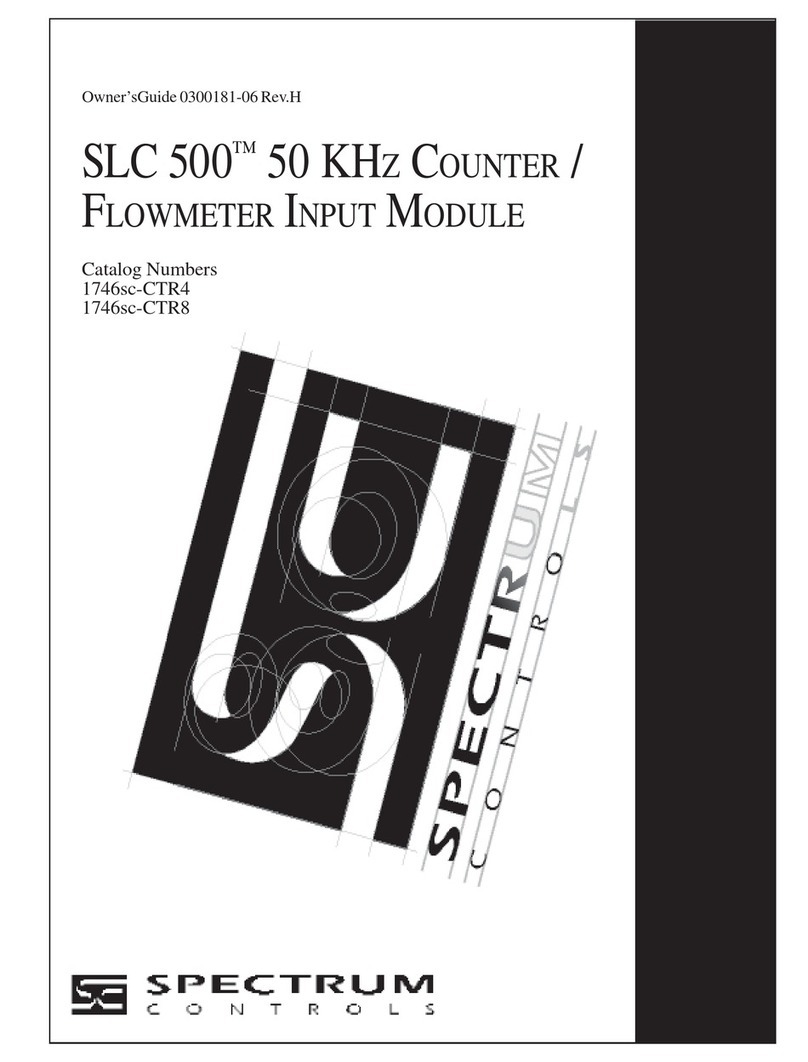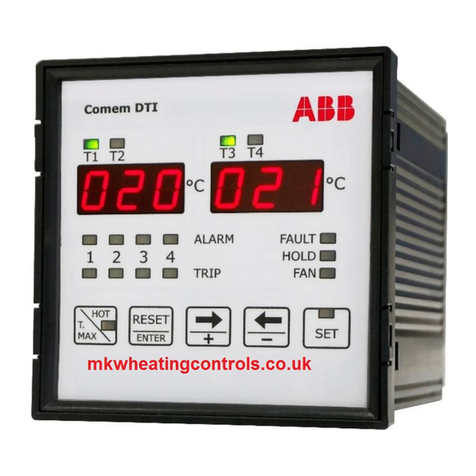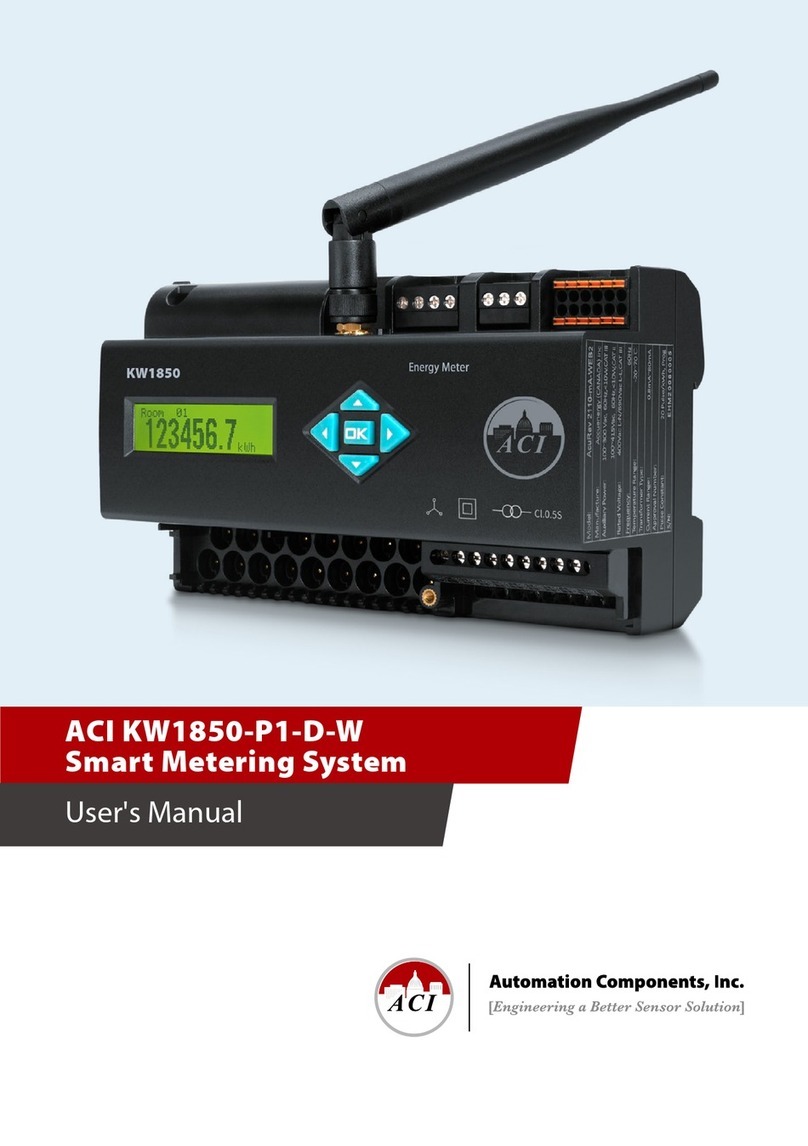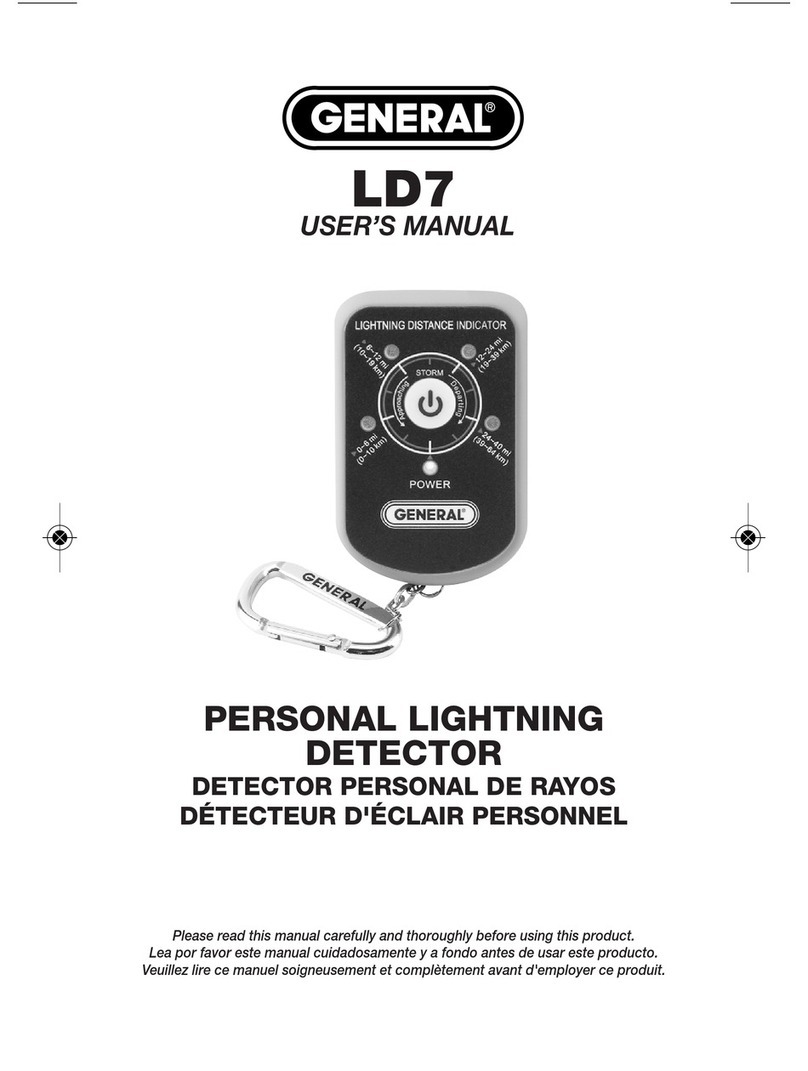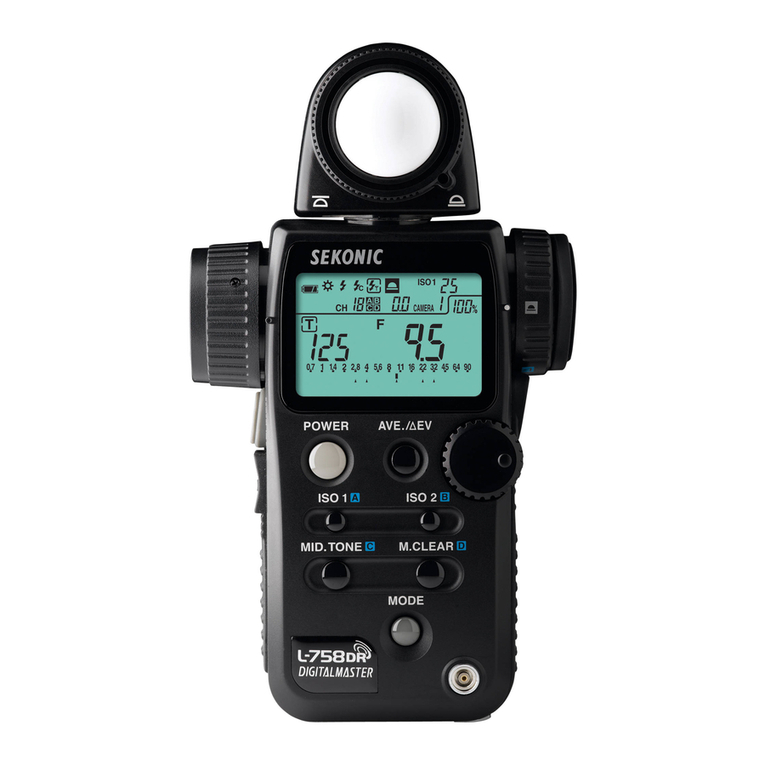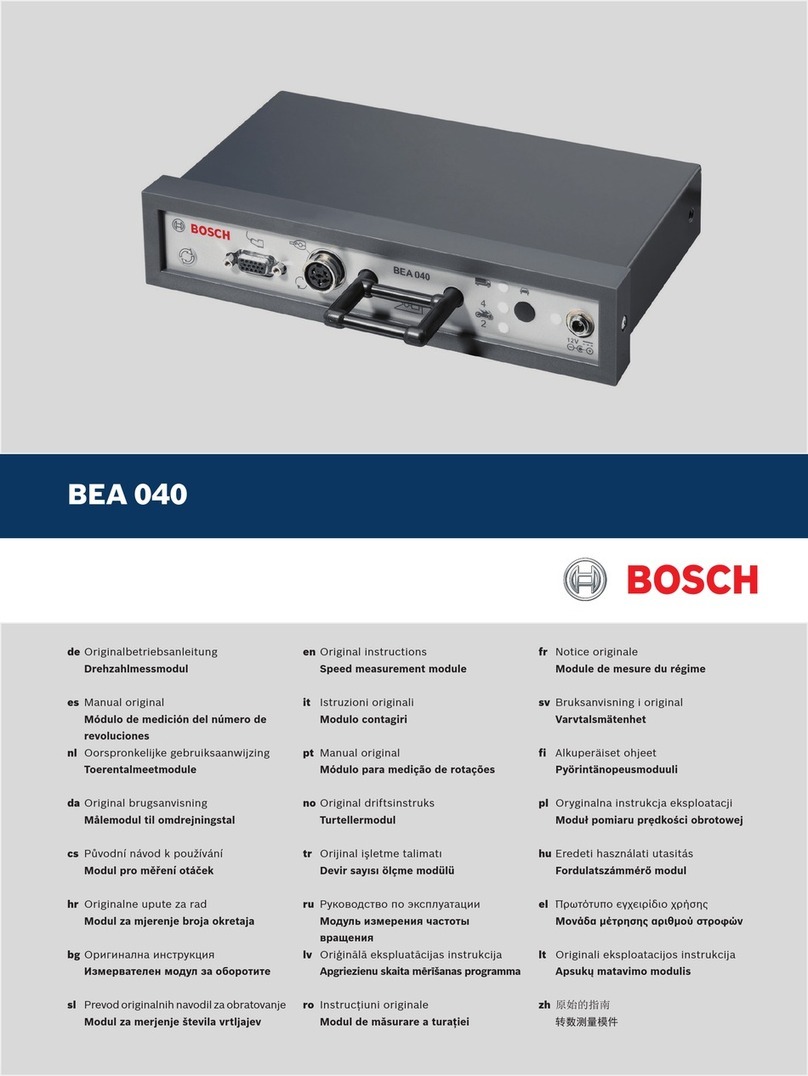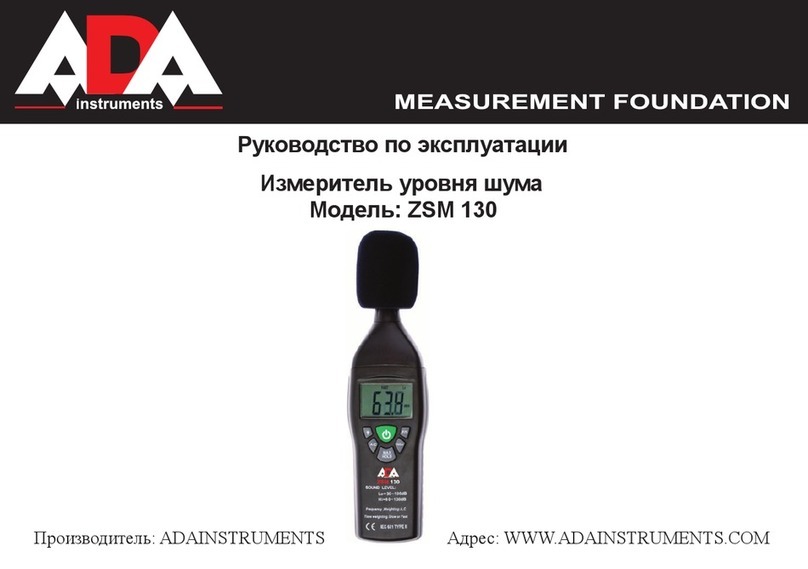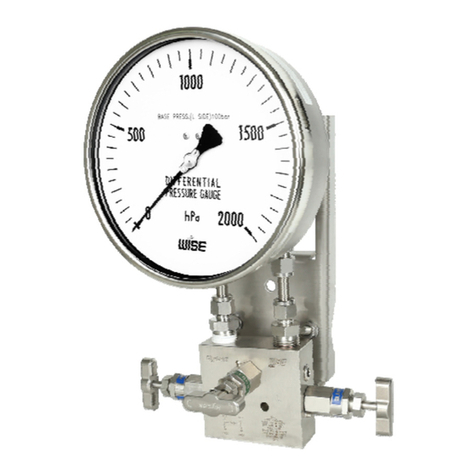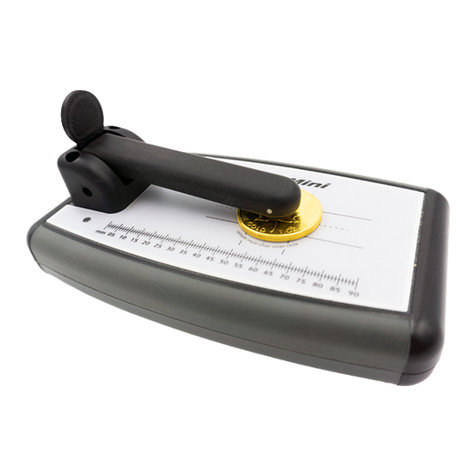NorthEast Monitoring DR400 User manual

Part number: NEMM048-Rev-G
Revision: August 25, 2021
Copyright 2021
All rights reserved
DR400 User Manual
patch style Holter recorder
with event capabilities
DR400 v5.25
PCPatch v1.10

NorthEast Monitoring, Inc. NEMM048-Rev-G Page 2 of 21
Table of Contents
DR400 User Manual Table of Contents
Chapter 1 - About the DR400 ... 3
Specifications ... 3
Intended Use ... 4
Indications for Use ... 4
Device Charging ... 4
LED Display ... 4
Patient Leads ... 4
Storage Capacity ... 4
Symbols ... 5
The Docking Station ... 5
Instructions to the User About Electrical Interference ... 5
Warranty Repairs ... 6
Operating the Recorder ... 6
Online help ... 6
Chapter 2 - Recording ECG ... 7
Step 1: Fully charge the DR400 ... 7
Step 2: Start the PCPatch utility ... 7
Step 3: Prepare patient ... 7
Step 4: Hook up Patient ... 8
Step 5: Start Recording ... 9
Step 6: Copy Holter file ... 9
Chapter 3 - PCPatch & Wireless ... 10
DR400 Settings ... 11
To View Live Patient ECG ... 12
Wireless Event Recording ... 13
ETel – Mobile Cardiac Telemetry (MCT) monitoring ... 14
Chapter 4 - Appendices ... 15
Appendix A: Maintenance and Care of the Recorder ... 15
Appendix B: Pacemaker Detection ... 15
Appendix C: Accessories ... 16
Appendix D: Extraction of ECG data on 3-channel ... 16
Appendix E: Technical Considerations ... 17
Appendix F: EMC Information ... 18

NorthEast Monitoring, Inc. NEMM048-Rev-G Page 3 of 21
Chapter 1 -About the DR400
The NorthEast Monitoring DR400 patch style recorder can be used as either a Holter mon-
itor and/or a looping Event recorder. Data obtained by monitoring is not analyzed at the
time of recording. After recording is complete, Holter data is uploaded to a compatible ver-
sion of NorthEast Monitoring’s Holter Analysis software. The DR400 recorder is compati-
ble with 5.2 or newer versions of HE/LX Analysis software. For Event, data is sent
wirelessly to a location where versions 2.11 or newer of the LX Event utility is used to
review and report on the recording.
The DR400 Recorder is not intended to replace real-time telemetry monitoring for
patients suspected of having life-threatening arrhythmias.
The DR400 Recorder is not for In Vitro diagnostic use.
Specifications
Physical Specifications
The DR400 recorder meets the following physical specifications:
• Size: 6.8 cm (length) x 3.9 cm (width) x 1.3 cm (depth)
• Weight: 33 grams (1.2 oz.) with battery
Electrical Specifications
The DR400 recorder electrical specifications are:
•Recording bandwidth: 0.05 to 70 hertz in 180 samples/sec. mode*
•Operation duty cycle: Continuous
•Data storage format: Sample difference
•Pacemaker sensitivity: 2 millivolts
•Pacemaker pulse duration: 150 to 2,500 microseconds
•Resettable fuses: 0.5 amp
* When measuring millivolts, results should be within 5% of expected results.

NorthEast Monitoring, Inc. NEMM048-Rev-G Page 4 of 21
DR400 User Manual About the DR400: Intended Use
Environmental Specifications
This equipment is not suitable for use in the pres-
ence of a flammable anesthetic mixture with air,
oxygen, or nitrous oxide.
The operating range of the device is between 10
and 45 degrees C, between 10 and 95% humidity,
and between 500 and 1060 hPa pressure.
Store and/or transport the recorder at temperatures
between -20 and 60 degrees C for up to 1 month,
and -20 to 30 degrees C for long term; and
between 10 and 95% relative humidity, and 500
and 1060 hPa pressure.
IP44 Ingress Protection
The DR400 recorder has an Ingress Protection
Marking of IP44. Dust will not enter device in suf-
ficient quantities to interfere with satisfactory
operation. Water jets will not have harmful effect.
Wireless Specifications
The DR400 recorder is equipped with a wireless
Bluetooth transmitter. The Bluetooth specifica-
tions for the DR400 are:
•Receive Sensitivity: 95 dBm
•Output Power: 10.5 dBm max
•Link Budget: Up to 105.5 dB
•RX/TX Turnaround: 150 us
•Frequency: 2402 – 2480 MHz in 1 Mhz steps
•Data Rate and Modulation:
BR:1 Mbps,
GFSK / EDR: 2-3 Mbps PSK
•Number of Channels: 79
Intended Use
•Holter Mode: Detection of Arrhythmias and
Efficacy of Pharmacological Treatment.
•Event Mode: The recorder captures events
automatically or when activated by the patient
for diagnostic evaluation of transient symp-
toms.
Indications for Use
1. Detection of Arrhythmias: The DR400
recorder is indicated for use in continuous
monitoring of cardiac rhythm when intermit-
tent arrhythmia are suspected due to patient
symptoms such as palpitations, transient isch-
emic attacks (TIAs), syncope (fainting), or
other such symptoms as determined by the
physician.
2. Efficacy of Treatment: DR400 recorder is
indicated for use to determine whether current
pharmacological treatment(s) of known
arrhythmia is effective by measuring the fre-
quency and duration of the arrhythmia com-
pared to the frequency and duration prior to
treatment.
Device Charging
The DR400 recorder has an internal rechargeable
Lithium battery that is not user replaceable. The
recorder comes with a Docking Station and USB
cable that attaches to any USB charging source
(power adapter) or PC for recharging. The battery
will take at most, 3 hours to fully recharge between
uses.
Warning: A UL 60950-1 certified charger is
recommended for use with the recorder. A non-
certified charger may not be safe to use.
LED Display
The DR400 recorder has an LED display which
consists of a single light that indicates various
modes and conditions.
Patient Leads
The DR400 recorder is used exclusively with
NorthEast Monitoring 1- or 3-lead patch elec-
trodes or a 3-lead adapter.
Storage Capacity
The patient’s ECG data is stored on non-volatile
memory internal to the recorder. The internal
memory can store up to 470 MB of data.

NorthEast Monitoring, Inc. NEMM048-Rev-G Page 5 of 21
DR400 User Manual About the DR400: Symbols
Symbols
Please note that the recorder is labeled with the fol-
lowing symbols:
Refer to instruction manual/
booklet. Follow instructions for
use
Type BF device.
This device contains an internal
lithium battery that may be recy-
cled at end of life. This device
and all other accessories should
be disposed of according to local
ordinances.
This product does not contain
lead.
Caution: Federal law restricts
this device to sale by or on the
order of a
physician
This device has Bluetooth
capabilities.
Warning: Use of this equipment adjacent to or
stacked with other equipment should be avoided
because it could result in improper operation. If
such use is necessary, this equipment and the
other equipment should be observed to verify
that they are operating normally.
The Docking Station
The DR400 comes
with a docking sta-
tion that is used for
recharging the bat-
tery, uploading
Holter data and
updating the
DR400. The dock-
ing station can be
attached to either a PC for charging and data trans-
fer, or a power adapter for charging only. A cable
with a micro-USB connector attaches to the dock-
ing station, and the USB end of the cable connects
to a PC or power adapter.
Before or after a procedure, firmly attach the
DR400 to the docking station via two electrode
snaps. When attached via the snaps, a connection is
made when the 4 small pads on the recorder coming
in contact with the 4 spring pins on the base of the
docking station.
Once the DR400 is attached to the docking station,
the recorder will recharge automatically. Addition-
ally, after 2 minutes, the DR400 will stop recording
Holter data and end the procedure.
Instructions to the User About
Electrical Interference
This equipment has been tested and found to com-
ply with the limits for a Class-B digital device, pur-
suant to Part 15 of the FCC Rules. These limits are
designed to provide reasonable protection against
harmful interference in a residential installation.
This equipment generates, uses and can radiate
radio frequency energy and, if not installed and
used in accordance with the instructions, may cause
harmful interference to radio communications.
However, there is no guarantee that interference
will not occur in a particular installation. If this
equipment does cause harmful interference to radio
or television reception, which can be determined by
turning the equipment off and on, the user is
encouraged to try to correct the interference by one
or more of the following measures:
•Reorient or relocate the receiving antenna.
•Increase the separation between the equipment
and receiver.

NorthEast Monitoring, Inc. NEMM048-Rev-G Page 6 of 21
DR400 User Manual About the DR400: Warranty Repairs
•Consult the dealer or an experienced radio/TV
technician for help.
This equipment has been certified to comply with
the limits for a Class-B computing device, pursuant
to FCC Rules. In order to maintain compliance with
FCC regulations, shielded cables must be used with
this equipment. Operation with non-approved
equipment or unshielded cables is likely to result in
interference to radio and TV reception. The user is
cautioned that changes and modifications made to
the equipment without the approval of manufac-
turer could void the user’s authority to operate this
equipment.
Warranty Repairs
The warranty for NorthEast Monitoring products
can be found on our web-site at www.nemon.com.
Contact your dealer or NorthEast Monitoring prior
to returning a recorder for repair to determine the
warranty period, conditions and exclusions. If your
dealer is unavailable, contact NorthEast Monitoring
directly.
The recorder can only be serviced or repaired by
NorthEast Monitoring or a NorthEast Monitoring
authorized representative.
Prior to returning a recorder, you must obtain a
return merchandise authorization (RMA) number.
This RMA number must be visible on the outside of
the packing carton, otherwise, NorthEast Monitor-
ing will refuse delivery. The usable life of the
device and accessories are at least long as the war-
ranty period.
Operating the Recorder
If you require training, such as assistance in setting
up, using, or maintaining your recorder, contact
NorthEast Monitoring or your dealer. Should the
recorder fail to work properly during its useful life
or changes its performance, stop using immediately
and contact NorthEast Monitoring or your dealer.
Warning: The recorder cannot be serviced while
in use on patient.
The DR400 recorder contains no user-service-
able parts. Removing the label or opening the
recorder voids the warranty.
NorthEast Monitoring can be contacted at: [+1]978-
461-3992, toll-free in the U.S.A. at 866-346-5837,
The patient is not the primary operator, but may be
asked to use the PRESS button to record or transmit
events.
Care should be taken when this device is used,
especially with infants or small children, as it
includes small internal parts that could be a choking
hazard. Additionally, the lead could become entan-
gled and could be a strangulation hazard.
Online help
In addition to the information in this manual, more
information and help can be found at our web site,
www.nemon.com or by emailing technical support
The DR400 Technical Support page on the web-site
includes Frequently Asked Questions. The most
current version of manuals, the warranty and our
software can also be found on our web-site on the
“Downloads & Documents” page.

NorthEast Monitoring, Inc. NEMM048-Rev-G Page 7 of 21
Chapter 2 -Recording ECG
Below are the steps to complete a procedure using the DR400:
Step 1: Fully charge the DR400
You must fully charge your recorder before its first and every use. To charge the internal lithium battery,
place the battery into the docking station, and with the USB cable attached, plug the cable into the power
adapter. When plugged in, the DR400 will flash orange while charging, and once fully charged, will flash
green every 5 seconds. At this point, you can remove the DR400 from the docking station, and the recorder
will stop flashing and go into standby mode.
It takes approximately 2 hours to fully charge the battery from having no charge. A fully charged battery will
record Holter for up to 14 days, but we highly recommend that you charge the DR400 between patients. For
24 hour recordings, this will take only about 10 minutes between recordings. For long Event recordings, the
DR400 should be charged every 14 days.
If the DR400 is used frequently, for example, not left in the charger for more than a day or two, it is fine to
keep it plugged in between uses. If you use your DR400 less frequently, for example it might be plugged in
for more than a few days, it is best to remove the DR400 from the charger once full charged. You will then
want to plug it in again to ensure it is fully charged before your next study, but that should only take a few
minutes.
Step 2: Start the PCPatch utility
See chapter 3, The PCPatch Utility, for more information on using the PC Patch.
Place the fully charged DR400 into the docking station and attach the docking station to the
PC using the USB cable. Start the PCPatch utility and:
1. ERASE any data on the DR400. This will also update date and time.
2. Enter a New Patient ID for the next recording.
3. For DR400 v5.22 and greater, you can now click on the Start DR400 button in the PCPatch window. If
started, you will see a message that the DR400 will start once removed from the docking station.
If you see a message “THIS DR400 CANNOT BE STARTED VIA THIS BUTTON...,” you will need to
start the recorder as described in Step 4: Hook up Patient.
Step 3: Prepare patient
Patient preparation and patch placement is critical to obtain a quality ECG signal. To ensure proper hook-up,
follow these steps:
1. There are four hook-up options for the DR400:
Select either a 1-lead electrode patch (1CH) for event or Holter, a 1-lead electrode with the addition of a
ECG lead wire (3CH), a 3-lead patch (3CH) or the reusable 3-lead adapter.
2. Determine the best location to attach the electrode patch and/or electrodes.
3. Prepare the patient’s skin. If the patient has hair in any of the site, shave it with a safety razor. Use an alco-
hol pad and rub the sites briskly until the skin reddens. For best patch adhesion, allow the skin air dry
before proceeding.

NorthEast Monitoring, Inc. NEMM048-Rev-G Page 8 of 21
DR400 User Manual Recording ECG: Step 4: Hook up Patient
Step 4: Hook up Patient
1. PCPatch Utility. If you want to observe lead
quality at hook-up, start the PCPatch utility if
not already running. Once the PCPatch utility
finds the Bluetooth USB and is “waiting for
DR400”, the utility is ready for you to start the
DR400 recorder.
2. Remove the DR400 from the docking station.
If the DR400 was started via the PCPatch, jump
to Step 3.
3. To otherwise start the DR400, press and hold
the DR400 button down until the green light
starts flashing. If the light immediately turns
orange, this means one of two things: 1) the pre-
vious patient’s data has not been erased or 2) it
has been erased and there is no new Patient ID.
You will need to plug the recorder back into the
USB and use the PCPatch utility to delete the
file and/or enter a new Patient ID.
4. Attach electrodes to DR400. Attach the patch
or adapter to the DR400. If you are using the
optional lead wire with the 1-lead patch, attach
it now. Press down firmly so that all snaps are
locked in place. The 3-lead adapter lanyard
should be placed around the patient’s neck.
5. Attach Patch to Patient. Remove paper backing
from patch and press firmly on to patient to
attach. If using optional lead wire with patch,
attach an electrode to the extension lead wire
and attach to the patient in the proper location.
For 3-lead adapter. Attach electrodes to each
lead and adhere electrodes as pictured in exam-
ple.
1-lead patch with
optional lead wire (3CH)
3-lead patch
3-lead adapter with lanyard placement.
Electrodes required.

NorthEast Monitoring, Inc. NEMM048-Rev-G Page 9 of 21
DR400 User Manual Recording ECG: Step 5: Start Recording
Step 5: Start Recording
1. To start the DR400 recorder, hold the PRESS but-
ton down firmly until the green light goes off. At
the beginning of a new procedure, the DR400 first
shows a solid green light which goes off when
recording has started. You can tell it has started
when:
•The DR400 will flashes green for 30 seconds
(v5.04) or up to 60 minutes (v5.06).
•If the PCPatch is on and the DR400 has been
paired with the local Bluetooth, the ECG
viewer will automatically open and you will be
able to view the ECG. Once the viewer window
is closed, the DR400 will continue to record but
will stop flashing at this time.
Warning: If the light on the DR400 turns a solid
orange, this means that the previous patient’s
data is still on the DR400 or the DR400 does not
have a Patient ID. When this occurs, you must
plug the DR400 into the PC and use the PCPatch
utility to save and/or delete the previous patient’s
data and/or enter a new Patient ID.
2. Advise the patient that showering is allowed with
the DR400 and patch attached, but we do not rec-
ommend that the patient go swimming or bathing
while wearing either.
3. Instruct the patient on how to use the PRESS but-
ton to indicate symptomatic events or activities of
interest during the Holter test. Advise them to push
the PRESS button briefly.
4. Provide the patient with instructions on how to use
and change the patch or electrodes.
Wireless Event
For Event recording, the patient must also be sent
home with a NorthEast Monitoring Gateway that is
set up to transmit events wirelessly and a USB charger
with instructions to charge the DR400 every 14 days,
if required. Let the patient know that the DR400 will
flash orange while charging, and then flash green
when fully charged.
When the recorder is in Event mode, the recording
will stop if the DR400 is erased or the recorder has
been plugged in for > 48 hours.
Step 6: Copy Holter file
1. After recording is finished and the patch and lead
wire have been removed from the DR400, plug the
recorder into the docking station that is attached to
the PC where the HE/LX Analysis or LX Remote
software is installed.
Note: For Holter, recording stops once the
DR400 is plugged into the PC or power for 2 or
more minutes.
2. Copy the flash.dat file (ECG data file) into the
next available patient directory and analyze or
send the file as usual.

NorthEast Monitoring, Inc. NEMM048-Rev-G Page 10 of 21
Chapter 3 -PCPatch & Wireless
The PCPatch utility is used to set up and start the DR400 for each procedure.
From the utility you can copy the Holter file, erase data, preview he file, update
settings and enter the Patient ID. Optionally, the utility can also be used to view
your patients ECG data live via a Bluetooth USB that is attached to your PC.
Download and Install the utility
Go to the NorthEast Monitoring web-site at www.nemon.com to download the PCPatch utility.
Once downloaded, install the PCPatch on the computer where you prepare the DR400s for the
next procedure. The default directory, “c:\nm\bin” is where the PCPatch utility will be installed,
unless you specify otherwise. If HE/LX Analysis or LX Remote is located in a different direc-
tory, you will need to override the “nm” directory at install. Once installed, you should see a
shortcut on your desktop. Click on the shortcut to run the PCPatch utility.
Using the PC Patch Utility
Plug the DR400 into the USB on the same
PC where the PCPatch utility is running.
When a DR400 is found, you can do the fol-
lowing:
•Preview - When a patient file is on the
DR400, you can view the Recorder S/N,
the Patient ID and the date and start time
of the recording
•Copy Flash.dat - Although this button
can be used to copy the flash.dat file into
the next open directory in HE/LX soft-
ware, we recommend that you use the
HE/LX or LX Remote copy feature to
upload the file when the procedure is
complete.
•Erase DR400 - After the patient file is
saved, use this to erase the patient file
from the recorder. You will need to do this before you can start a new recording.
You will also need to erase the previous file before you can update settings for your next
recording.
•New Patient - After erasing previous patient, enter the Patient ID for the next recording
•Settings - Update the Recorder settings and pair with Bluetooth and/or Gateway. The DR400
must be erased before Settings can be updated.
•Start DR400 - For DR400 versions 5.22 and greater, this button can be used to start the
recorder. The DR400 must be erased and have new Patient ID number to be started.
PCPatch main screen with Bluetooth available

NorthEast Monitoring, Inc. NEMM048-Rev-G Page 11 of 21
DR400 User Manual PCPatch & Wireless: DR400 Settings
DR400 Settings
DR400 settings are updated via the Settings screen in
PCPatch. Except for Pairing the DR400, the recorder
must first be erased before Settings can be updated.
Recorder Type. Holter will record up to 3-channels,
Event will record 1-channel. For Holter, the DR400 will
record up to 14 days.
Event Marker. When “On”, the ECG will be labeled
with one second of 6-cycle square wave at the event.
Event Settings
Are enabled when Recorder Type = Event.
Pre Event Seconds. Number of seconds saved before
an event is detected. Up to 60seconds allowed.
Post Event Seconds. Number of seconds saved after
the event. Up to 60 seconds allowed.
Auto Detect Settings for Event
Auto Detect Turn auto detection On/Off for all event
types, including AF.
AF Detect. Turn Atrial Fibrillation detection On/Off.
Minimum Time Between AF. For AF events only.
The range of 2 - 90 minutes.
Minimum Peak AF HR. Minimum HR that at least 3
beats of the previous 20 must exceed, in order for an
event to be called AF. The range is 60 - 120 BPM.
Brady Limit. If a heart rate on or below this number is
detected, a brady event will be recorded. The range is
20 - 100 BPM.
Tachy Limit. If a heart rate on or above this number is
detected, a tachy event will be recorded. The range is
50 - 300 BPM.
Pause Limit. If no heart beat is detected for at least the
pause length in seconds, a pause event will be recorded.
The range is 1.0 to 10.0 seconds.
Separation. Limits the number of events by type by
requiring a minimum amount of time between the same
type of event. Applies to all events, except AF. The
range is 2 - 20 minutes.
Update Recorder and Close. Click to save changes.
Close window to make no changes.
Parameter Check Time. When ETel-MCT is being
used, how frequently the DR400 will check the FTP
site for instructions. The range is from 20 to 240 min-
utes. When set to 0, the recorder will not check for ETel
messages, however, if a message exists when an event
is being transmitted, the message will be received and
the DR400 will respond accordingly.
About the DR400
The following items are about the DR400 and cannot be
updated via the PCPatch: Serial No. of DR400 recorder,
CC (Customer Code), Version number of firmware on
DR400, and Build number of firmware on DR400
Date and Time . The current date and time are auto-
matically updated when the DR400 is erased using the
PCPatch utility.
PCPatch Settings Screen

NorthEast Monitoring, Inc. NEMM048-Rev-G Page 12 of 21
DR400 User Manual PCPatch & Wireless: To View Live Patient ECG
To View Live Patient ECG
The DR400 transmits a Bluetooth signal for ECG
viewing. When the PCPatch is running and receives
the Bluetooth signal, it will open an ECG Viewer
screen. You must have a the Bluetooth USB adapter
pictured below to view the patient ECG on the PC.
First, install Bluetooth USB.
Plug the Bluetooth USB into the
same PC where the PCPatch util-
ity is installed. It may take a short
time for the Bluetooth USB
driver to be installed onto the PC.
Once installed and functional, the
mode button on the Bluetooth USB will flash green.
Second, start the PCPatch utility.
Upon starting the PCPatch, you will
first see “Looking for BT” while
the utility searches for a Bluetooth
USB that is physically attached to
the PC.
When the PCPatch Utility is run-
ning and the Bluetooth USB is
found and ready to receive a sig-
nal, you will see the message,
“Waiting for DR400”.
Note: The PCPatch utility only searches for the
Bluetooth USB at start up or while attempting to pair
with a DR400. If not found, close PCPatch and
restart again.
Third, pair the DR400 to Bluetooth USB. Before
you can view live ECG with a particular DR400, you
will first need to pair the DR400 with your Bluetooth
USB. On the PC where the Bluetooth USB is installed,
plug in the DR400, open the PCPatch, and go to the
Settings screen. Click on the “Pair Bluetooth USB”
and the PCPatch will attempt to pair the two. Once
paired, you will see the USB number on the Settings
screen. The last 5 numbers should match the Serial
Number of your Bluetooth USB. The button is only
enabled when a Bluetooth USB was found when the
PCPatch utility started.
Using PCPatch to View ECG
With the DR400 ready to record and attached to the
patient, start the PCPatch application. Once the utility
shows “Waiting for DR400”, hold the PRESS button
down to start the recording. Once the green light turns
from solid to flashing, recording has begun and trans-
mits Bluetooth for about 15 seconds. After a brief
pause, the PCPatch utility should open the window to
view ECG.
If recording has already started and you wish to view
the ECG, hold the button down until it starts flashing
green rapidly, and then release.
Troubleshooting
No Bluetooth “No BT” message:
•If the Bluetooth USB is installed
on the same computer, and the
PCPatch fails to see it, you can try
to restart the PCPatch so that it searches again. The
PCPatch only searches for the Bluetooth USB at
start up.
•Unplug and reinsert Bluetooth USB. Check to
make sure that the mode light is flashing green.
Restart the PCPatch utility to restart the search.
•Drivers for the Bluetooth USB were included with
your Windows Operating System. But if you plug
in the Bluetooth USB for the first time and the PC
is unable to see it at all (the mode light on the USB
is not flashing green), you may need to locate and
reinstall the device drivers.
“Waiting for DR400” message:
If you see this message and the DR400 appears to
be transmitting but you have no ECG screen, per-
haps the DR400 is not paired with the Bluetooth
USB that is plugged into the PC. If you want to fix
this now, you will need to remove the DR400 from
the patch electrode and plug it into the USB cable
to pair it with the Bluetooth USB from the Settings
screen.
ECG Viewer

NorthEast Monitoring, Inc. NEMM048-Rev-G Page 13 of 21
DR400 User Manual PCPatch & Wireless: Wireless Event Recording
Wireless Event Recording
Event recording on the DR400 is done wirelessly,
via a NorthEast Monitoring Gateway and an FTP
site. Refer to the Gateway - FTP Technical Manual,
NEMM046, for more information on how to set up
and run the Wireless feature.
The Gateway Settings
The Gateway field on the Settings screen shows
which Gateway has been paired with the DR400.
The Service
URL key,
Remote Server
URL, Remote
Server Port,
Carrier APN,
and Key ID are
all required to
transmit suc-
cessfully.
If any of these
items are blank or incorrect, you can update these
by putting your URLKEY.dat file into the bin direc-
tory and pairing the Gateway again. If your
URLKEYdat is incorrect or you do not have a
URLKEYdat file, contact NorthEast Monitoring or
your distributor for assistance.
Important: A URLKEY.dat file must exist in your
directory in order to pair with a new Gateway. If
the file does not exist, the Pair Gateway button will
not be enabled.
Recording an Event Procedure
Event recording is for channel 1 only, but otherwise
the setup and recording procedure are the same as
Holter and are described in the previous chapter.
While recording in Event mode, the patient should
charge the DR400 every 14 days at a minimum.
Remind the patient that the recorder will flash
orange while charging, and then flash green when
fully charged.
As with Holter, the patient can record an event by
pressing the PRESS button quickly. The recorder
will flash green when recording an event. Flashing
will also occur when the recorder is saving an auto-
matically generated event.
Transmitting Events
Once an event has been saved, the DR400 will
attempt to transmit by contacting the Gateway after
20 minutes. After several tries, and if a Gateway is
not found or wireless transmission is not successful,
the recorder will then try every two hours to make a
connection. Once a transmission is successful, the
DR400 will attempt to send events until all are sent.
Transmitting Events Manually
With the Gateway present and receiving a good sig-
nal, hold the PRESS button down until the DR400
starts flashing orange rapidly. At this point, the
DR400 will attempt to connect with its paired Gate-
way in order to send transmissions. This can be
done during or after the procedure has stopped.
Events on returned DR400
After the event pro-
cedure, the Settings
screen will show
you the total number
of events that were
saved as well as any
that are still remaining and not transmitted. If you
would like to save the remaining events, you will
need to plug in the Gateway and transmit the events
manually as described above.

NorthEast Monitoring, Inc. NEMM048-Rev-G Page 14 of 21
DR400 User Manual PCPatch & Wireless: ETel – Mobile Cardiac Telemetry (MCT) monitoring
ETel – Mobile Cardiac
Telemetry (MCT) monitoring
NorthEast Monitoring’s ETel utility must be
installed on your PC for Mobile Cardiac Telemetry
(MCT). MCT is a feature that can be added to a
DR400 in Event recording mode and allows for
bidirectional communication between PC and the
DR400 without patient interaction.
MCT allows you to request continuous recording
for a period of time within the past 24 hours and
also allows you to change any or all of the Auto
Detect Settings during the event procedure.
The ETel Utility
The ETel utility is used to send MCT messages to
the DR400 during the procedure. The screen below
shows a request that would be used to obtain ECG
data. ECG data requests must be within the last 24
hours. Up to 10 minutes at a time can be requested.
Multiple requests can be sent during a single proce-
dure, however, only one request at a time can be
queued for a single DR400.
Additionally,
Auto-event
settings can
be updated
during the
procedure.
The values
for the next
setting are put
in the New Setting Value field.
Once a request is Sent, it will be
queued in the window on the
right. For each DR400, only one
request can be sent at a time.
The request will be removed
from the list once it has been received by the
DR400.
If you need to delete a command before it is sent,
you can click on it while on the list and confirm that
you want it removed.

NorthEast Monitoring, Inc. NEMM048-Rev-G Page 15 of 21
Chapter 4 -Appendices
Appendix A: Maintenance and Care of the Recorder
Clean the outside of the recorder with a damp soft cloth between uses; use water and a non-abra-
sive liquid soap, as required. DO NOT use any abrasive cleaners, such as acetone, on the outside
of the recorder.
Disinfect as needed, following instructions from your infection control department. Sani-Cloth
germicidal surface wipes are recommended.
Sterilization is not needed.
Do not submerge the recorder in water.
At the end of their useful lives, all NorthEast Monitoring Inc. products should be disposed of
following local ordinances.
Appendix B: Pacemaker Detection
The recorder has a built-in pacemaker detection capability. This was designed to overcome the
problems inherent with the analysis of Holter recordings from patients with pacemakers.
A pacemaker is designed to initiate cardiac conduction by stimulating a spot on the myocardium
with a pulse of 1-4 volts and a duration of typically 250 to 2,000 microseconds. When this pulse
is seen at the surface recording electrodes it is significantly attenuated. For patients with a uni-
polar electrode configuration, the signal at the surface may range from under 50 to over 200
millivolts. When a bipolar lead configuration is used, the signal is typically much lower and is
in the range of 3 to 50 millivolts. Especially with the bipolar leads, the signal size is dependent
on the positions of the pacemaker lead and the surface electrodes.
The amplitude of the signal being referred to here is not the size of the "spike" commonly seen
on an ECG cart or bedside monitor. Since the duration of the pulse is short compared to a QRS
complex, normal ECG recorders will greatly attenuate the signal; in some cases it cannot be
seen at all. Also, some ECG recorders have devices which enhance the pace pulse to insure that
it will be displayed. Only very wide bandwidth recorders as are sometimes used in an electro-
physiology study will show the unmodified full amplitude of the pulse.
The recorder has the wide bandwidth ECG amplifiers necessary to pass the pacemaker pulse.
Since the pulse would still be too short to be recorded in a reliable manner at any practical sam-
pling rate for Holter recording, the pulse is detected by the recorder. The time of the pulse is
then digitally stored along with the Holter ECG data. When the data is analyzed, the pacemaker
pulse is displayed and used for the analysis.

NorthEast Monitoring, Inc. NEMM048-Rev-G Page 16 of 21
DR400 User Manual Appendices: Appendix C: Accessories
At recording time, it is desirable to have the
recorder be as sensitive to the pacemaker pulse as
possible so pulses will not be missed. A conflicting
requirement is that there should be as few false
pacemaker detections as possible.
False pacemaker detections are primarily caused by
electrical events. Any external electrical signal that
is coupled to the patient electrodes which looks like
a pacemaker pulse will of necessity be stored by the
recorder. The most common form of electrical sig-
nal that can look like a pacemaker signal is an elec-
trostatic discharge (ESD) or "spark." These happen
very frequently in dry weather but also occur, at a
lower rate, under humid conditions.
Fortunately most ESD spikes as seen at the patient
electrodes are of shorter duration or of lower ampli-
tude than the real pacemaker pulses. While there is
no absolute limit to the size or duration of the ESD
pulses, the recorder ignores all pulses that are less
than 150 micro-seconds long or are less than two
millivolts in size.
As pacemakers are normally programmed to a pulse
width greater than 200 microseconds, this does not
cause a loss of detection. The requirement that the
pacemaker pulse be at least two millivolts in size is
not a common problem.
Appendix C: Accessories
Contact your distributor to purchase accessories for
the DR400.
NEMEL002. 1-lead electrode patch
NEMEL003. 3-lead electrode patch
NEMCA161. 16” Reusable patient extension lead
wire (use with NEMEL002 for 3-channel)
NEMCA162. 3-lead adapter cable with lanyard
NEMH238. Lanyard for 3-lead adapter
NEMH226. DR400 docking station.
NEMP00511. USB Power Port Adapter LV Sun
with 3’ power cord.
NEMP00513. Sena Parani Mfg PN SD1000U:
Bluetooth USB Adapter for Serial Port
Appendix D: Extraction of
ECG data on 3-channel
It is possible to retrieve the raw ECG files from the
Holter files. For all 3-channel data, the process
results in three files, one for each channel. Each file
is then in the form of a binary file consisting of 16-
bit words (little endian) with each word represent-
ing one sample. The sampling is at 180 samples per
second. The data is scaled so that the least signifi-
cant bit has a value of 12.5 uv. If a pacemaker pulse
was detected, the sample at the time of detection
will be replaced by the value 0x8000.
To generate these files, first analyze the data (actu-
ally the flash.dat) from the recorder using any com-
patible version of the LX Analysis program. At the
completion of this there will be a file "datacard.dat"
in the patient directory. The full path is by default:
c:\nm\pat\xx\datacard.dat
where xx is the number of the patient dataset.
This can be seen in the "No. and Directory" col-
umns of the "File->open/new" display.
Then, change the directory to c:\nm\bin and on a
single command line, run the following command
using the following 5 arguments:
unpackdc d1 f1 f2 f3 0
•where d1 is the path to the source datacard file,
for example,
d1= c:\nm\pat\xx\datacard.dat
•f1, f2 and f3 are the resultant binary destination
files, for example:
f1 = c:\nm\pat\xx\flashc0.dat
f2 = c:\nm\pat\xx\flashc1.dat
f3 = c:\nm\pat\xx\flashc2.dat
The result will be the three files in the patient direc-
tory xx described previously. The files are
flashc0.dat flashc1.dat and flashc2.dat which are for
channel 1,2 and 3 respectively. If desired, the desti-
nation paths for this command can be any other
path but spaces are not allowed in the path or file
name.

NorthEast Monitoring, Inc. NEMM048-Rev-G Page 17 of 21
DR400 User Manual Appendices: Appendix E: Technical Considerations
Appendix E: Technical
Considerations
LX Remote Installations
You may want to install the PCPatch Utility on the
PC where the LX Remote desktop application
exists. Use the PCPatch to erase, update and to pre-
pare the DR400 for your next patient, however, you
should only use the LX Remote software to copy
the file off of the DR400 when the procedure is
complete.
Network Installations
For Holter, if the PCPatch utility is being installed
on a PC that does not have HE/LX Analysis
installed, you will need to do the following to allow
the user to save patient files to HE/LX Analysis:
1. Ensure that the local PC has read/write access to
the HE/LX Analysis patient directory on the
server
2. On the local PC, create a directory labeled
“c:\nm\bin”
•Copy the h4w.ini file from a PC that has HE/LX
Analysis installed and paste it into the local
directory. (The h4w.ini file most likely can be
found in the c:\nm\bin directory.)
Using Windows, test to ensure that the path to the
Patient Directory works for the PC where PCPatch
is installed.
Microsoft File Explorer keeps opening
when DR400 plugged in
If the window keeps opening, it may be
that your connection is loose. But if you
want to prevent the window from opening
when you first plug in or erase your
DR400, you can adjust your Windows
Settings. Go to Settings > Devices
>AutoPlay and for Removable Devices,
set it to “Take no action”.
.

NorthEast Monitoring, Inc. NEMM048-Rev-G Page 18 of 21
DR400 User Manual Appendices: Appendix F: EMC Information
Appendix F: EMC Information
Attention should be paid to the following EMC
information prior to installing or using the
Northeast Monitoring DR400 Recorder device.
• Portable and mobile Radio Frequency
(RF) communication equipment may
interfere with the operation of the device.
• The device has been tested and found to
comply with IEC/EN 60601-1-2.
• Computers, cables and accessories not
tested to 60601-1-2 may result in increased
emissions or decreased immunity of the
device.
• Verify normal operation if utilizing the
device adjacent to or stacked with other
electrical equipment.
Guidance and manufacturer’s declaration – electromagnetic emissions
The Northeast Monitoring DR400 Recorder is intended for use in the electromagnetic environment
specified below. The customer or user of the Northeast Monitoring DR400 Digital Recorder should ensure
that it is used in such an environment.
Emissions Test Compliance Electromagnetic environment –
guidance
RF emissions CISPR 11 Group 1 Northeast Monitoring DR400
Digital Recorder uses RF energy
only for its internal function.
Therefore, its RF emissions are
not likely to cause any in nearby
electronic equipment.
RF emissions CISPR 11 Class B Northeast Monitoring DR400 Dig-
ital Recorder is suitable for use in
all establishments other than
domestic and those directly con-
nected to the public low-voltage
power supply network that sup-
plies buildings used for domestic
purposes.
Harmonic emissions
IEC 61000-3-2
Not applicable
Voltage Fluctuations/flicker
emissions IEC 61000-3-3
Not applicable

NorthEast Monitoring, Inc. NEMM048-Rev-G Page 19 of 21
DR400 User Manual Appendices: Appendix F: EMC Information
Guidance and manufacturer’s declaration – electromagnetic immunity
The Northeast Monitoring DR400 is intended for use in the electromagnetic environment specified
below. The customer or user of the recorder should ensure that it is used in such an environment.
Immunity test IEC 60601 test
level
Compliance level Electromagnetic
environment – guidance
Electrostatic discharge
(ESD) IEC 61000-4-2
± 6kV contact
± 8kV air
± 6kV contact
± 8kV air
Floors should be wood,
concrete or ceramic tile.
If floors are covered with
synthetic material, the
relative humidity should be
at least 30%.
Electrical fast
transient/burst
IEC 61000-4-4
± 2 kV for power
supply lines
± 1 kV for input/
output lines
Not applicable.
No cables exceed 3
meters
Mains power quality
should be that of a typical
commercial or hospital
environment.
Surge
IEC 61000-4-5
± 1 kV line(s) to
line(s)
± 2 kV line(s) to
earth
Not applicable.
Northeast Monitoring
DR400 Recorder is
battery powered.
N/A
Voltage dips, short
interruptions and
voltage variations on
power supply input
lines
IEC 61000-4-11
< 5% UT
(>95% dip in UT)
For 0,5 cycle
40% UT
(60% dip in UT)
For 5 cycles
70% UT
(30% dip in UT)
for 25 cycles
< 5% UT
(>95% dip in UT)
for 5 s
Not applicable.
Northeast Monitoring
DR400 Recorder is
battery powered.
N/A
Power frequency (50/
60 Hz) magnetic field
IEC 61000-4-8
3 A/m 3 A/m Power frequency
magnetic fields should be at
levels characteristic of a
typical location in a typical
commercial or hospital
environment.
NOTE UT is the a.c. mains voltage prior to application of the test level.

NorthEast Monitoring, Inc. NEMM048-Rev-G Page 20 of 21
DR400 User Manual Appendices: Appendix F: EMC Information
Guidance and manufacturer’s declaration – electromagnetic immunity
The Northeast Monitoring DR400 Recorder is intended for use in the electromagnetic environment specified
below. The customer or user of the recorder should ensure that it is used in such an environment.
Immunity test IEC 60601 test
level
Compliance
level
Electromagnetic environment – guidance
Conducted RF
IEC 61000-4-6
Radiated RF
IEC 61000-4-3
3 Vrms
150 kHz to 80 MHz
3 V/m
80 MHz to 2,5 GHz
3 V
3 V/m
Portable and mobile communications equipment
should be used no closer to any part of the
Northeast Monitoring DR400 Recorder, including
cables, than the recommended separation
distance calculated from the equation applicable
to the frequency of the transmitter.
Recommended separation distance
d = 1.2
P
d = 1.2
P 80 MHz to 800 MHz
d = 2.3
P 800 MHz to 2.5 GHz
Where P is the maximum output power rating of
the transmitter in watts (W) according to the
transmitter manufacturer and d is the
recommended separation distance in metres (m).
Field strengths from fixed RF transmitters, as
determined by an electromagnetic site survey,a
should be less than the compliance level in each
frequency range.b
Interference may occur in the vicinity of
equipment marked with the following symbol:
NOTE 1: At 80 MHz and 800 MHz, the higher frequency range applies
NOTE 2: These guidelines may not apply in all situations. Electromagnetic propagation is affected by
absorption and reflection from structures, objects and people.
a Field strengths from fixed transmitters, such as base stations for radio (cellular/cordless)
telephones and land mobile radios, amateur radio, AM and FM radio broadcast cannot be
predicted theoretically with accuracy. To assess the electromagnetic environment due to fixed RF
transmitters, an electromagnetic site survey should be considered. If the measured field strength
in the location in which the recorder is used exceeds the applicable RF compliance level above,
the recorder should be observed to verify normal operation. If abnormal performance is observed,
additional measures may be necessary, such as re-orienting or recorder
b Over frequency range 150 KHz to 80 MHz, field strengths should be less than 3 V/m.
Other manuals for DR400
5
Table of contents
Popular Measuring Instrument manuals by other brands

Alicat Scientific
Alicat Scientific EtherNet/IP operating manual

mru
mru Vario Luxx user manual
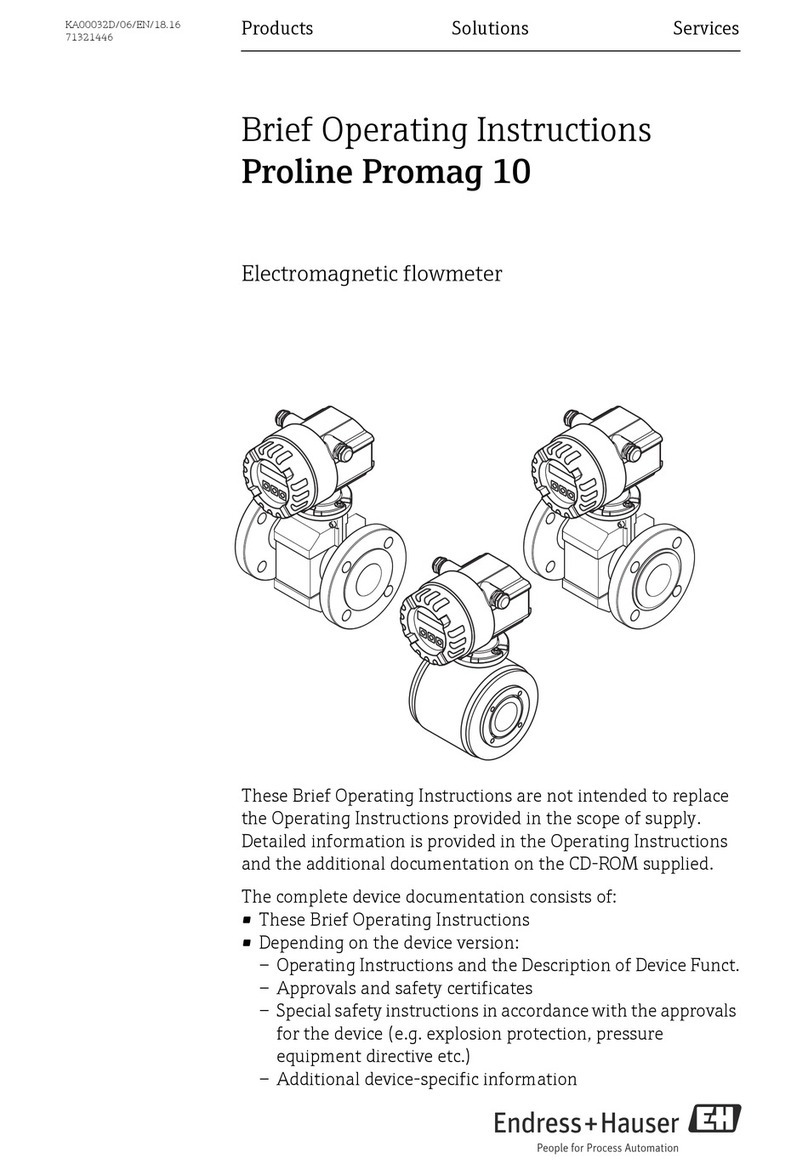
Endress+Hauser
Endress+Hauser Proline Promag 10 Brief operating instructions
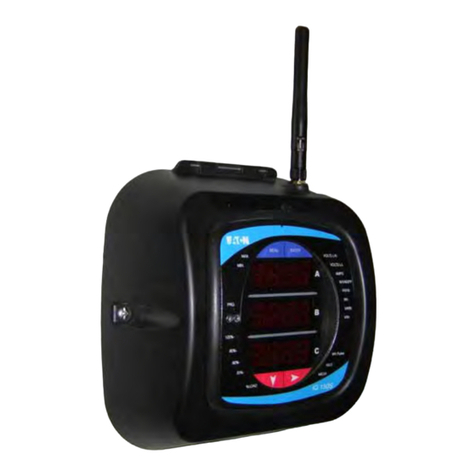
Eaton
Eaton IQ 150S User & installation manual
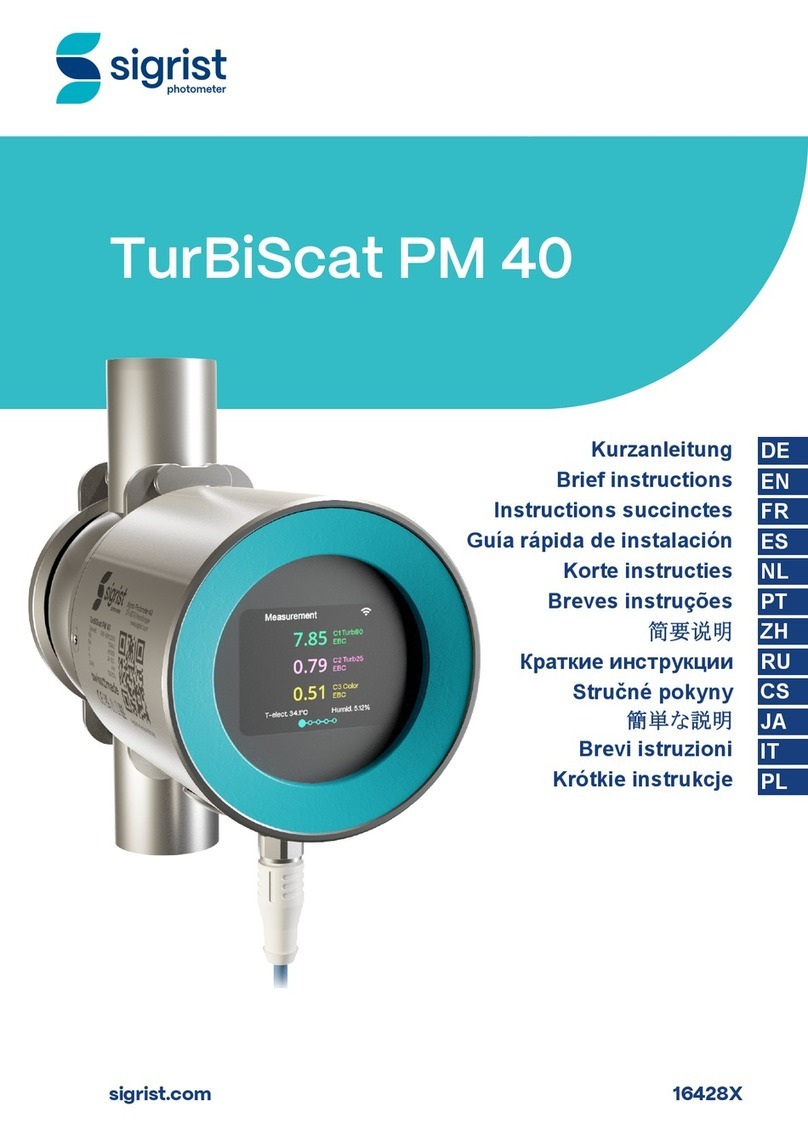
SIGRIST
SIGRIST TurBiScat PM 40 Brief instructions

Wutong Electronic
Wutong Electronic NWT4000-1 user manual
